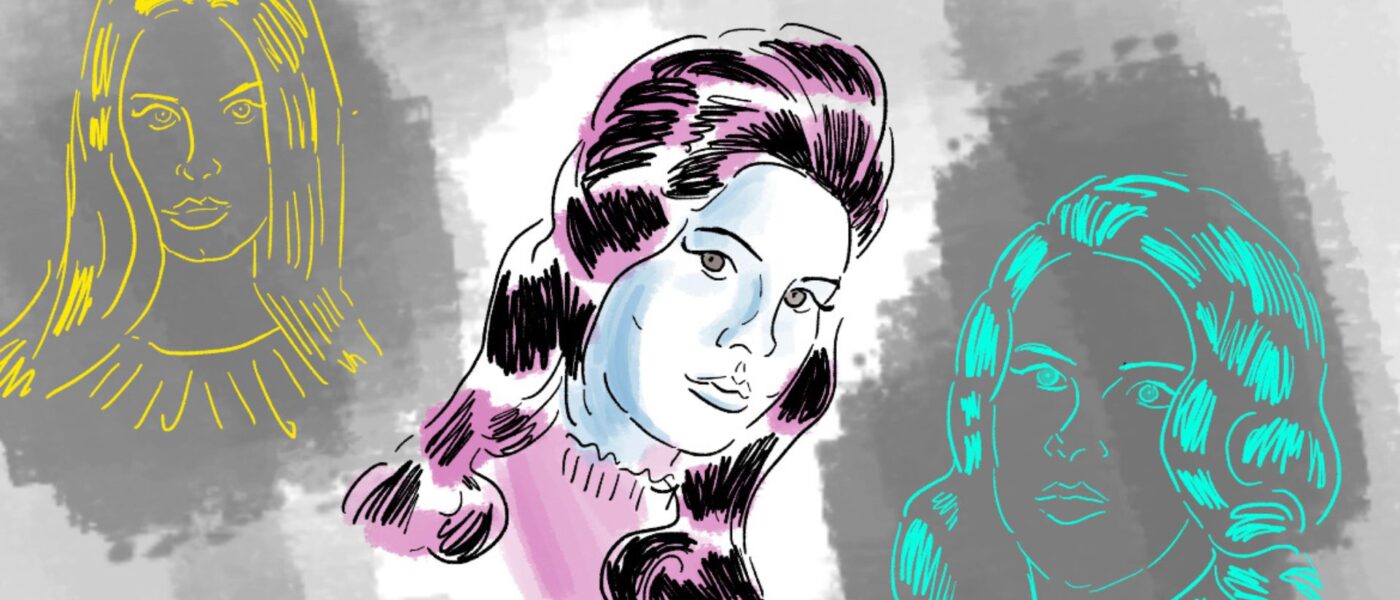The Evolution Of Lana Del Rey
By Lorena Vazquez and Nicole Del Rio
When Lana Del Rey’s career blossomed in the early 2000s, she used various stage names such as Mary Jailer, Lizzy Grant and her real name, Elizabeth Woolridge Grant.
Her signature name, Lana Del Rey, was born after she took a trip to Miami. She was inspired by the city’s culture and Latin influence. The new name, she felt, encapsulated the art and aesthetic of her early music.
Lana rose to Hollywood fame in 2011 after the release of her debut single, Video Games. That was a foreshadowing of the aesthetic and style that soon permeated throughout her work.
Her melody and music videos deliver nostalgic glimpses of the mid-1960s and 1970s with signature vibrant colored outfits, matching sets, babydoll makeup look, a retro-pop aesthetic and iconic hairstyles like the beehive and bouffant. Her 2012 album, Born to Die was a staple of her early American aesthetic; it created trends across social media platforms like Instagram and Tumblr.
Her next album, Ultraviolence, which won two awards in 2014, continued to embody the vintage-inspired aesthetic Lana reintroduced on social media. Besides her fashion, Lana Del Rey grew in popularity because of the messages her music captured—the dark side of relationships that harbor abuse, manipulation, loss and betrayal.
In 2015, Lana released her fourth studio album, Honeymoon, a take on the vintage-retro “coastal granddaughter” aesthetic, which includes pastel beachy tones and color schemes. The album is a mixture of romance and tragedy. High By The Beach , one of the album’s most popular tracks, mixes melancholic-like upbeat melodies while singing about heartbreak.
Lana’s 2017 album, Lust for Life, is Rey’s fifth studio-produced album and she bleeds her coastal granddaughter-like aesthetic into it from Honeymoon but with a softer touch.It also features collaborations with artists like The Weeknd, Travis Scott, Playboi Carti, Stevie Nicks and more. The album is one of her most musically diverse with a fusion of hip-hop beats, classic rock collaborations and psychedelia vibe aimed at attracting fans worldwide.
Two years later, her most critically acclaimed album Norman F**ing Rockwell peeled away the glamor. On the cover Lana steps away from the beehives opting for a jacket and ponytails. The melodies are softer but the lyrics maintain a biting honesty her fans know and love her for. But it shows that she is more than just a sad girl with assertiveness proving that strength and sensitivity belong together, not apart.
Post pandemic, Lana released a spoken word album and poetry book Violent Bent Backwards Over the Grass. The poems speak to her wanderlust and give insight into the artist’s escapism.
Two albums, Chemtrails Over the Country Club and Blue Banisters were released in 2021; they feel like sisters. The projects pick up on the softness she spewed on Honeymoon and experiment with folk elements. Lana keeps her Americana aesthetic strong on Norman F**ing Rockwell and plays into her vulnerability with songs like White Dress and Dealer.
The album also contemplates the additive and exploitative nature of fame. Rather than an old Hollywood star, the images of Chemtrails Over the Country Club and Blue Banisters play into the caricature of the average girl next door, only with more depth and drama.
All of it leads up to her latest album released in March of 2023, Did You Know That There’s A Tunnel Under Ocean Blvd. In it, Lana explores her reputation as the “sad girl,”offering a witty insight into what being Lana Del Rey really means. In the song Margaret, she tells the story of how her producer Jack Antonoff met his wife.
Lana Del Rey has evolved into a representation of the sensitivities and struggles many women can relate to. The artist is bold, exploring topics such as abuse, grooming, substance abuse and mental health that have brought her a fair share of criticism and acclaim.
Sad girl or not, Lana’s music offers an intimate look into the artist’s blemishes and transforms them into art.

